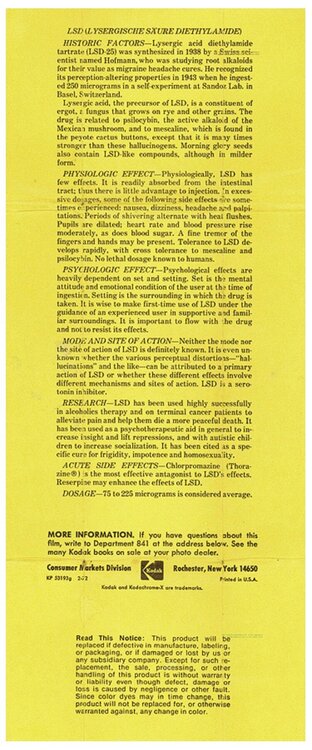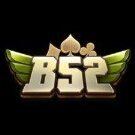All Activity
- Today
-
soicau247com2 joined the community
-
s8show1 joined the community
-
v9betwebsite joined the community
-
rr88auction5 joined the community
- Yesterday
-
Amber1980 joined the community
-
88VVbrcom joined the community
-
co88bet joined the community
-
xin88global1 joined the community
-
vmax1co joined the community
-
33winorganic joined the community
- Last week
-
gg88redcom changed their profile photo
-
Stella greece started following AHS & CHAMP Meetings this week
-
kubet88works1 changed their profile photo
- Earlier
-
8xxspace changed their profile photo
-
vz99day0 changed their profile photo
-
Hi! I don’t have any real data here but I too noticed my cycles were linked to my hormones. When I first started getting CH back in highschool it was always during my placebo week of my birth control, which was an estrogen pill. When I switched to other kinds I noticed the pattern of headaches would always be around the time of my period. I took myself off birth control maybe 7 years ago now. My last CH cycle was last year. I started getting them yearly or bi-yearly around fall/winter instead of in relation to my cycle. I use vitamin L maintenance routine to keep the headaches away but I do notice shadows right before my period begins. So I do think the two are linked for me! I have also read a few other people who had similar experiences. That being said, I’m not sure what to do with this knowledge, but it is interesting that many women experience that! I just started seeing a functional medicine doctor to get full labs on my hormones, etc. and will share if I fine anything helpful!!!
-
Well, they were probably just guessing about it being helpfull for autistic children or being a cure for homosexuality
-
During recent research i found this picture. so weird that we are using a so called counter culture drug that was created as a medicine for our disease/disorder and was made illegal in the 60ies. and nowadays everybody seems to be forgotten that it was like that. mind blown!
-
Alx changed their profile photo
-
Hi all. I used the search function to see if this had been shared on the forums already, I couldn't find anything. Australian headache researcher Dr Faraidoon Haghdoost has obtained funding for a clinical trial into the potential for psilocybin to prevent disabling cluster headache, funded through the Novel Treatments and Management Strategies for Chronic Pain stream of the Australian Medical Research Future Fund (MRFF). The trial is called the ‘Psilocybin Efficacy and Acceptability on Cluster Headache Episodes’ PEACE Study. Faraidoon has put a request out to any Australian Cluster Headache warriors that would be prepared to talk about their journey with the disease to help raise awareness, I quote from his recent post on Big Head Pain on Facebook. If you are a CH warrior in Australia or know someone that is whom may be willing to have a chat with Faraidoon about getting involved, please reach out to him at the links below. Seeking a Person with Cluster Headache for a Media Interview (Plus Big Publication News!) I’m excited to share that our manuscript, “Patient Perspectives on Research Gaps in Cluster Headache”, has been accepted for publication in Headache journal! This work is deeply rooted in patient experience, and we’re thrilled to see it moving into the academic and clinical space. As part of sharing this milestone, we’re organising media interviews to discuss the findings and raise awareness of cluster headache. We are looking for someone living with cluster headache in Australia who would be willing to join one of these interviews - including sharing their name, photo, and personal experience, if comfortable. Your voice could make a real difference in helping the broader community understand the condition. If you’re interested - or would like more information before deciding - please comment below or message me privately. We’d be very happy to include someone from our community in these interviews. Thank you all for your ongoing support and for continuing to strengthen this community. More about the study: https://www.georgeinstitute.org/news-and-media/news/hope-for-cluster-headache-community-as-psilocybin-trial-funded Big Head Pain Facebook group: https://www.facebook.com/groups/3085334835045020 Email: faraidoonhaghdoost@gmail.com
- 1 reply
-
- 3
-

-
c168rucom changed their profile photo
-
b52clubforum changed their profile photo
-
Hey sir, A bit late to the party on this response, but I wanted to follow up. First, thank you for your service! I spent time in Kyrgyzstan, UAE, Kuwait and Iraq throughout my 11 years. Worked nukes when I was state side up in Montana. Oddly enough, I was rated 50% but there were a few things going on that were all connected. Overall, it was a culmination of both the clusters and the insomnia(which i started having when I forward deployed to Iraq). I hope you don't mind me asking, (feel free to message me privately as well), but was your 30% for the headaches alone, or is that 30% WITH your PTSD as well?... Because if so, that seems exceptionally low.
-
The range for normal depends on the country and the lab. Quest offers a range of 30-100ng/mL however the specific regimen you may read about here and on other platforms for CH prophylaxis targets a vitamin D blood level of 80-100ng/mL for episodic, the upper limit for Quests range for normal and slightly above that for chronic CH. Enjoy the watch and hopefully a pain free holidays ahead.
-
One kitty is for wusses.
-
jon019 started following Hormones: All experiences
-
....not aware if high or low estrogen is a CH trigger....my PERSONAL belief is that changes to routine or body chemistry CAN be. mayhaps a discussion with physician to ramp up the estrogen a bit more slowly. i also note that an amazingly high number of medication side effect warnings suggest the exact reason for taking the med (headache for example) as a potential side effect. a bit frightening until you consider you affecting the system or chemistry that is causing you problem. sorry if thats a little "what?...hard for me to explain things these days... best jon
-
usaviralexon506 changed their profile photo
-
Buy PayPal Accounts changed their profile photo
-
Update. 3 days ago I started a small amount of topical estrogen replacement and today have had a CH attack. It was a minor one but definitely the kind of thing I would experience at the start of a cycle. Yet Google tells me the opposite should be true, that CH are more likely with low estrogen levels ?????
-
Illuminations Canada changed their profile photo
-
What country are you based in please?
-
Hi all. Here is a 10 minute explainer video utilizing AI to generate some pixar characters of myself and Pete Batcheller to offer an introduction and "flight briefing" of the Vitamin D Regimen, a patient led preventative treatment protocol for Cluster Headache. For more information on the regimen I know there is plenty on information in the forums here and the guides, interviews and other Vitamin D videos can be found over at www.vitamindregimen.com
-
AHS & CHAMP Meetings this week
eagleswings replied to eagleswings's topic in Advocacy, Events and Conferences
-
https://youtu.be/AtoxkK7MeKc?si=vOCKVT0zIXsauhF8
-
- 3
-

-
AHS & CHAMP Meetings this week
eagleswings replied to eagleswings's topic in Advocacy, Events and Conferences
I just wanted to give an update. Bob and 3 of us on the board attended. We had tons of good meetings- just the amount of respect I saw regarding Clusterbusters was huge - from pharma to headache specialists...we have an amazing reputation. Got to see and hear Dr. Schindler, Dr. Burish, Dr. Nahas, and others present. Hopefully some more promising research coming down the pipeline! -
Hi all, Didn’t want to post until I had at least 2 years no head aches. Found success with the below. Used to get headaches 2-3 times per year, lasting 7-14 days 2 attacks per day for 4 years. triggers WERE- red wine, excess sauna (dehydration) and changing time zones ie when I came home from over seas. 1) Initially micro dosed psilocybin daily then took 1grm every 1-3 months as a slightly bigger dose. Did this for a year. Helped the severity and duration. I did stop this after 1 year. 2) PROPER hydration (not just drinking more water). Added mineral supplementation for actual water absorption. *stay away from tap water*. Diatomaceous earth 2x day + Celtic sea salt (1 pinch with every single glass of water) + Irish Sea moss for minerals. We don’t get these trace minerals in our foods/ soils and definitely not our water supply any more. Plenty of coconut water too. Once consistent with this I found a massive difference. I truely believe I was chronically dehydrated. 3) Fascial manoeuvres to stretch and hydrate bodies fascia around head/ neck/ face and jaw. Check “Human garage” on YouTube or online they have some amazing routines for head aches and general wellbeing. All for free. May not work for all but for a natural, low cost and low effort routine - give it a crack !!! Wishing everyone all the very best !
-
- 2
-

-

-
Support Groups this Week Needing support? We have a group for you! TUESDAY: Do you live in California? Join Tuesday 7pm PT - message Clusterbusters or anna@clusterbusters.org for an invite link WEDNESDAY: Care Partners! Join Julia at 7pm ET - Register here: https://us06web.zoom.us/meeting/register/8AQ75ckZQn-ddzoYfreZbQ 8pm ET join Joe Stone - sign up here for the 2nd Wednesday of the month meeting: https://clusterbusters.org/get-support/ THURSDAY: Do you live in Texas? Join the Texas group by emailing gary@clusterbusters.org for an invite- it meets at 7:30 CT SUNDAY: Do you live in New Zealand or Australia? New Zealand: 6pm Australia AEDT: 4pm Australia AEST: 3pm Join Craig by registering here: https://us06web.zoom.us/meeting/register/jBEVM84QRs-RP6lgNdFCmw *You do not have to live in the region of the group to join.
-
Thank you
-
This post might be helpful as you consider welding O2. Notes about welding O2 - ClusterBuster Files - ClusterBusters
-
Thank you very much Dallas I have been thinking about looking into it, but that is the little push i needed. Thank you so much!!






.thumb.png.d237bb0dbb7bd8ac08da8f08a1ba65f8.png)






.thumb.jpg.24dde7ef3152d6d31b9546e3fec3b26d.jpg)



